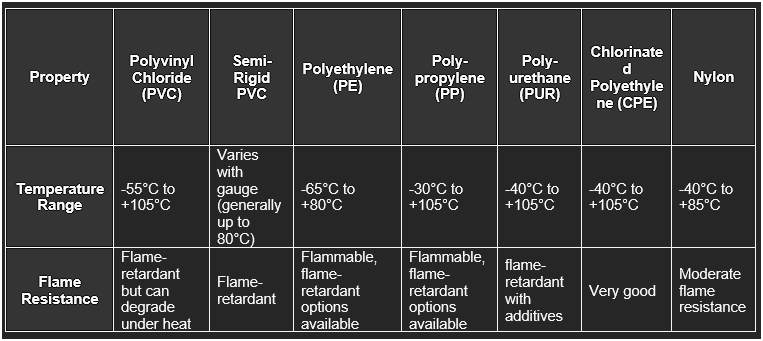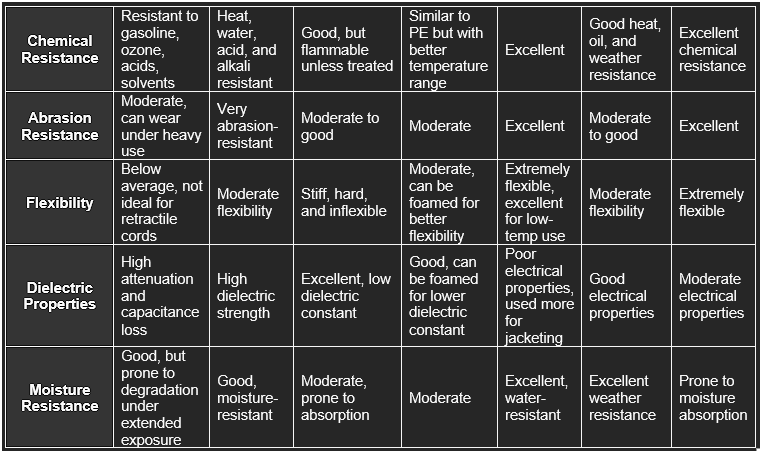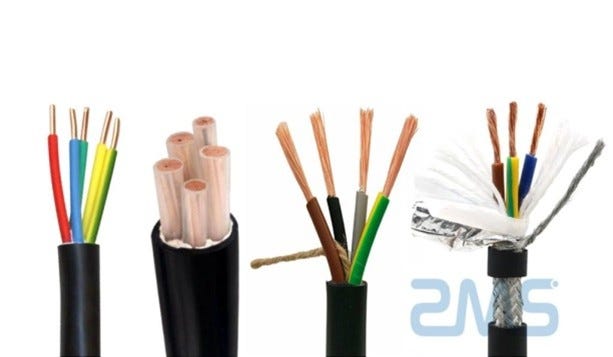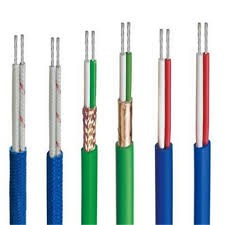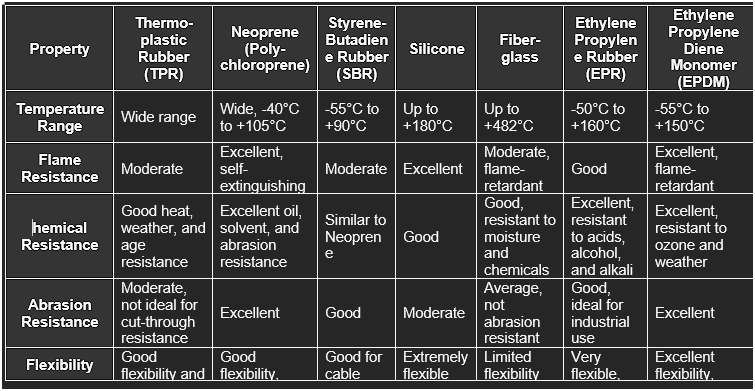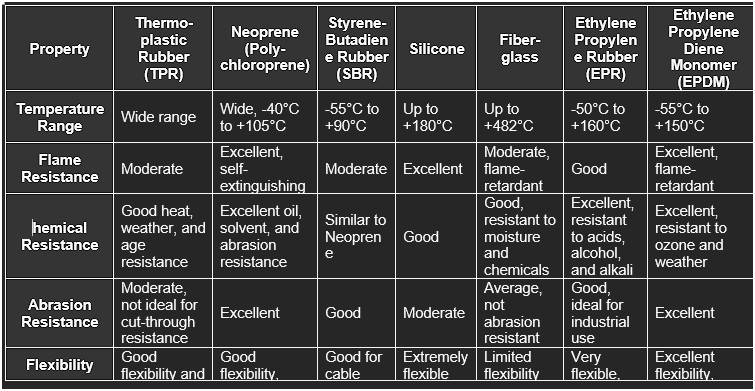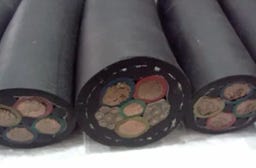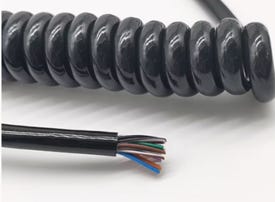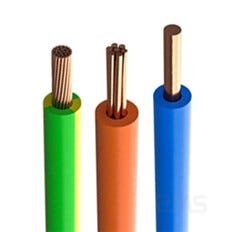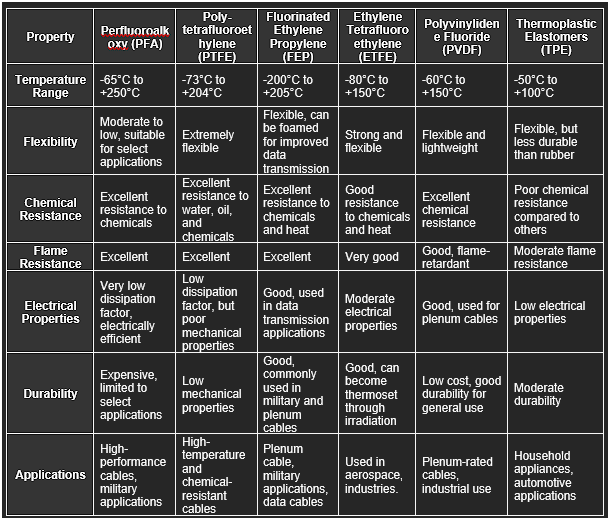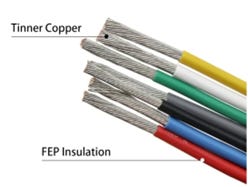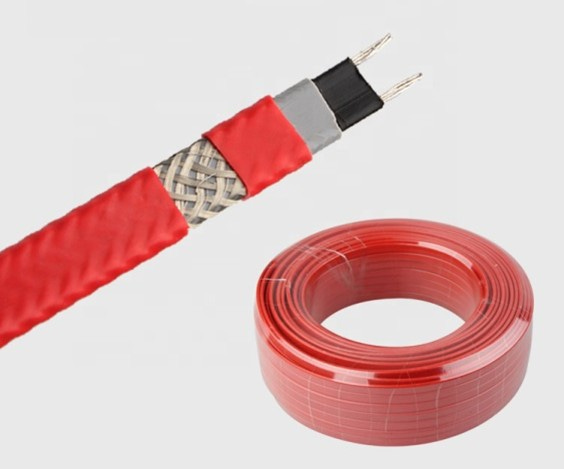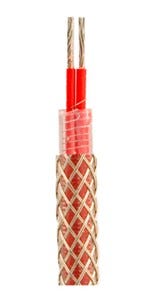Role of Electrical Insulation Materials in Heating Cables: A Comparative Study of Internal and External Insulation
How can the unseen layers of insulation, delicate yet powerful, shape the safety, efficiency, and longevity of heating cables, ensuring they endure the harshest environments while silently performing
Abstract
In the intricate world of heating cables, the insulation materials—both internal and external—play a pivotal role in ensuring not only the safe operation of the cables but also their long-term efficiency and reliability. This study delves into the complex dynamics between internal and external insulation, offering a detailed comparison of the materials that govern the core functionality of these cables. From preventing electrical hazards to safeguarding against environmental factors, this exploration reveals how these materials, though seemingly simple, form the backbone of heating cable technology, guaranteeing both safety and sustainability in diverse environments.
Introduction
Electrical insulation materials serve to electrically isolate the heating element from its surroundings, preventing short circuits and electrical hazards. Additionally, they protect the cables from environmental factors such as moisture, UV radiation, and extreme temperatures, which could compromise performance and safety. By maintaining the integrity of the heating system, electrical insulation materials not only enhance operational efficiency but also contribute to the longevity of the system.
Electrical Insulation Materials
The three main insulation materials are Plastic, Rubber, and Fluoropolymer. These materials have high dielectric strength, meaning they can withstand the electrical voltage without breaking down. This ensures that the cable can safely carry electrical current to the heating element without causing electrical leakage or failure.
1. Plastic insulation materials are synthetic polymers used to protect electrical cables by preventing electrical leakage and shielding the conductors from environmental factors like moisture, chemicals, and physical damage. These materials offer excellent electrical insulation, durability, and flexibility, with common types including PVC, polyethylene, and PTFE. They are versatile and widely used in residential, commercial, and industrial applications for efficient and safe electrical wiring.
2. Rubber insulation materials are flexible and elastic polymers, often used in applications requiring high flexibility and resistance to environmental factors like moisture, ozone, and UV light. Unlike plastics, which are typically more rigid, rubber provides superior mechanical flexibility, making it ideal for dynamic applications. Compared to fluoropolymers, which offer high temperature and chemical resistance, rubber insulation is more cost-effective and suited for moderate temperature and general-purpose applications like seals and gaskets.
3. Fluoropolymer insulation materials are high-performance polymers that contain fluorine atoms in their molecular structure, providing exceptional resistance to extreme temperatures, chemicals, and environmental factors. Unlike rubber, which is more flexible, and plastic, which is often rigid, fluoropolymers maintain their strength and electrical insulating properties at temperatures ranging from -200°C to 260°C and are resistant to almost all chemicals. This makes them ideal for high-temperature, corrosive, and high-performance applications, such as aerospace, chemical processing, and electrical wiring in harsh environments. Fluoropolymers are more expensive but provide superior durability and reliability in extreme conditions.
1. Plastic Insulation Types
In electrical heat tracing systems, plastic insulation materials provide electrical isolation, ensuring safe current flow and preventing short circuits. They also offer thermal protection by retaining heat, while shielding the cables from moisture, abrasion, and environmental factors, enhancing durability and installation flexibility.
There are various plastic insulation types. Comparison table of their properties is given below:
The temperature range in the table refers to the range of temperatures at which a material can perform effectively without losing its essential properties. If a material is exposed to temperatures outside its specified range, it may lose its functional integrity (e.g., insulation properties, chemical resistance, flexibility), leading to failure in its intended application.
Ultimately, the best material choice depends on the specific needs of the application, including temperature range, flexibility, chemical exposure, flame resistance, and performance. For general use, PVC is often preferred, but for extreme environments or specific applications, other materials like PE, PP, PUR, and CPE may be more suitable.
CPE is best suited for chemical plant use, areas with exposure to ozone and UV degradation, or underground applications. It offers excellent protection against water, chemicals, and abrasion, making it ideal for harsh conditions and outdoor environments where both chemical resistance and temperature stability are crucial.
PUR Ideal for environments where abrasion resistance is key, such as in retractile cords or mining cables. PUR offers excellent oxidation, oil resistance, and abrasion resistance, making it suitable for high-demand environments like heavy machinery, construction, and outdoor applications.
PE is a good choice for environments requiring excellent moisture resistance and weather resistance, particularly in outdoor settings. However, its temperature range limits its application in environments exceeding 80°C. It works well in low to moderate temperatures where flexibility and moisture resistance are essential.
PVC is best suited for underground feeders, aerial cables, and applications requiring moisture and abrasion resistance. PVC is also used for plenum-rated cables in environments with fire hazards due to its flame-retardant properties. It's not ideal for high or low-temperature extremes but offers great protection in moderate conditions.
Rubber Insulation Types
In electrical heat tracing systems, rubber insulation materials offer superior flexibility and abrasion resistance, making them ideal for environments with movement or physical stress. They also provide better low-temperature performance and are more resistant to oils, solvents, and weathering, making them suitable for harsh outdoor conditions.
Various plastic insulation types and their comparison table is given below
For electrical heat tracing systems, Neoprene (Poly-chloroprene) and Ethylene Propylene Diene Monomer (EPDM) are the preferred choices due to their excellent heat, abrasion, chemical, and flame resistance. Neoprene is particularly favored for its superior abrasion resistance and flame retardancy, while EPDM is ideal for outdoor and high-temperature environments requiring flexibility and environmental resistance.
However, other materials, such as TPR (Thermoplastic Rubber) and Silicone, are also used in specific applications.TPR is durable, weather resistant and can handle temperature extremes well. These characteristics lead TPR to be used in harsh environments. Silicone, on the other hand, is known for its exceptional flexibility and outstanding high-temperature resistance (up to +180°C). It is widely used in high-temperature applications such as heat treating, foundries, and aluminum processing, where it provides excellent electrical properties and moisture resistance.
3. Fluoropolymer Insulation Types
In electrical heat tracing systems, fluoropolymer insulation materials provide superior chemical resistance, high-temperature stability, and UV protection, making them ideal for harsh environments. They offer excellent dielectric strength and thermal efficiency, ensuring long-term durability in extreme conditions.
Various fluoropolymer insulation types and their comparison table is given below:
FEP and PTFE are the most preferred fluoropolymer insulation materials for electrical heat tracing systems due to their high temperature tolerance, chemical resistance, UV resistance, flame retardancy, and electrical efficiency.
PFA is a type of high-performance fluoropolymer characterized by its outstanding chemical resistance, high purity, and excellent temperature stability. Derived from the polymerization of perfluoropropyl vinyl ether, PFA shares similarities with FEP but boasts a higher working temperature, making it suitable for applications requiring advanced chemical resistance and elevated temperature performance, such as medical tubing, heat exchangers, semiconductor components, and various industrial uses. PFA is also one of the few plastics that are both suitable for high and low-temperature applications and can be used over the range of temperatures -268°C to 260°C. But it has higher cost than PTFE and FEP.
Comparison of Internal and External Insulation Materials
1) Internal Insulation Materials:
Thermoplastic materials such as Polyvinyl Chloride (PVC) and Polyurethane (PUR) are commonly used for internal insulation. These materials provide good electrical insulation and heat retention around the heating element.
2) External Insulation Materials:
For external insulation, fluoropolymers such as FEP (Fluorinated Ethylene Propylene) and PTFE (Polytetrafluoroethylene) are often preferred due to their high-temperature resistance, chemical resistance, and UV protection.
o FEP: Offers excellent UV resistance, chemical resistance, and can maintain high thermal stability, making it ideal for external insulation in harsh environments.
o PTFE: Highly resistant to heat, chemicals, and abrasion, making it suitable for protecting the cable from environmental exposure, ensuring that the heating system remains effective even under extreme conditions.
Electrical Insulation Materials in various heating cables
Polymeric Core Materials:
In flexible Series Resistance heat tracing use fluoropolymer which is rated for 600 Vac and can withstand continuous exposure to temperatures up to 500°F when the cable is de-energized. Additionally, for temperatures greater than 400°F, the cable shall have a fiberglass composite between the conductor and the jacket .(refer to sample pdf mentioned in references). This material has a significant role in controlling the heat output and maintaining uniform temperature across the cable. The polymeric core materials respond to temperature changes by altering the resistance, thus regulating the power output as the temperature changes.
Fluoropolymer Outer Jacket (e.g., Modified Polyolefins): These materials protect the internal components of the heating cable from environmental factors such as chemicals, UV radiation, and mechanical stress. The fluoropolymer outer jacket is particularly effective at providing resistance to chemical attacks, weathering, and abrasion. It ensures that the heating cable remains durable and functional even in harsh industrial environments.
For higher applications, MI(Mineral Insulated) heating cables use Magnesium oxide MgO as an internal insulation, designed to operate at temperatures above 300°F (150°C).
All heat-tracing applications with continuous operating (maintain) temperatures above 300°F (150°C) to 455°F (230°C), depending on power output required, or intermittent exposure temperatures above 500°F (260°C) shall use factory-terminated, mineral insulated (MI) cables.These cables provide excellent heat resistance and long-term reliability.
Power-limiting heating cable shall use a metallic heating element that varies its power output relative to the temperature of the surface of the pipe or the vessel. The cable shall be a parallel-zoned heating cable with a positive temperature coefficient heating element spirally wound around a flexible glass fiber core (fiber glass is used for core insulation).
Raychem self-regulating heating cables often use FEP (Fluorinated Ethylene Propylene) as the external insulation. These cables are used in chemical processing plants, oil pipelines, and food processing industries. Raychem's XTV and KTV series cables use fluoropolymer-based materials, such as FEP or PTFE, as external jackets. These cables are used for high-temperature applications where flexibility and protection against moisture and abrasion are critical.
Silicone is used as an external insulation material in some heat trace cables. These cables are designed to withstand extreme cold temperatures and provide flexibility in applications where low temperature is a concern. The silicone insulation provides excellent heat resistance, with a maximum operating temperature of 200°C (392°F) and a minimum of -30°C (-22°F), making it ideal for high-temperature and flexible heating applications.
Conclusion
The silent yet essential layers of insulation within heating cables not only ensure safe operation but also drive their efficiency, longevity, and resilience in the face of the harshest conditions. Through this comparative study, we see how the choice of materials—whether plastic, rubber, or fluoropolymer—has profound implications on the cable’s ability to withstand extreme temperatures, mechanical stress, and environmental threats. Internal insulation materials govern the power distribution and safety of the system, while external insulation shields the cable from the elements, ensuring continuous, uninterrupted performance. From the durability of Neoprene to the high-performance capabilities of FEP, these materials are the backbone of reliable heating cable systems that not only perform effectively but do so safely for years to come.
References
Silicone cable characteristics



